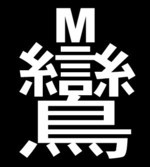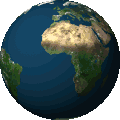|
Western
Europe 
Portuguese Republic

Portugal Madeira 
Funchal 
Madeira is a Portuguese archipelago that lies just under 400 km
north of Tenerife, Canary Islands, in the north Atlantic Ocean. 
The archipelago comprises the major part of one of the two Autonomous regions of Portugal, that includes the islands of Madeira, Porto Santo, and the Desertas. Funchal is the largest city, the municipal seat and the capital of Madeira.  The name Funchal, was applied by the first settlers that landed on its shores due to the abundance of wild fennel where, as tradition goes, the primitive burg was built.
Funchal Madeira february 2014

Funchal is located inside a natural amphitheater-shaped valley, with gentle slopes beginning at the coast which rise to 1200 meters, that provided a natural shelter for early settlers. 
The harbour of Funchal was the only major port in Madeira. Since 2007 it has been fully dedicated to passenger transport - cruise ships and ferries - and other tourist-related boats and yachts. 
Famous cable car ride between Funchal and Monte, high up on Funchal's mountains. 
Monte is a civil parish in the municipality and a suburb of Funchal. 
Locally, the parish is also known as Nossa Senhora do Monte. 
Monte is located a few kilometres east of Funchal and is near the road linking Funchal and Faial. 
Monte is between 600 and 800 m above sea level. 
The parish of Nossa Senhora do Monte was created in 1565, turning itself into a summer refuge for many wealthy families of Funchal. 
Looking to discover a mild climate in the summers, these novo riche constructed summer cottages along the hills of the district. 
The oldest religious building, the main church Igreja de Nossa Senhora do Monte was constructed in 1741. 
Me at the church Igreja de Nossa Senhora do Monte. 
Monte was the final resting place for Emperor Charles I of Austria. 
His last residence on the island was the Quinta do Monte close to the parochial church. 
The basket cars or tobogan run, remains one of the most popular features of Monte for the visitors. 
Monte is noted for its older gardens and greenspaces, with exotic plants and flowers, some open to the public. 
Today Funchal is a major tourist town, with hotels, port, and an international airport. 
A highway provides access to Câmara de Lobos and Ribeira Brava to the west. 
Funchal stadium, 24 february 2014. 
Funchal is frequently used as a stop-over by transatlantic sailors, en route from Europe to the Caribbean, as it is the northern most Atlantic island that lies in the path of the Westerlies. 
Funchal has a very mild Subtropical climate with evenly temperatures all year round. 
The climate can be separated into two main seasons. 
Funchal Madeira february 2014

A rainier and slightly cooler season from October through March with average daily high temperatures ranging from 20 °C to 25 °C and a drier and warmer season from April through September with average daily high temperatures ranging from 21 °C to 26 °C. 
Urban sculpture in Funchal, 25 february 2014. 
Urban sculpture in Funchal, 25 february 2014. 
Since the city rises from the sea up to altitudes of 800 meters on its northern slopes, it is quite common to experience cloudiness, fog and rain on those northern suburbs while clear skies remain nearer to the sea 
Temperatures also tend to be slightly lower at the higher altitudes. 
This settlement began around 1424, when the island was divided into two Captaincies, and the zones that would become the urbanized core of Funchal would be founded by João Gonçalves Zarco. 
Owing to its geographic location, the site became an important maritime port, whereas its productive soils became a focus of new settlers. 
Its coastal position, the most productive on the island, quickly permitted Funchal to develop an urban core and surpass the populations of other settlements, which slowly gravitated around it. 
As part of its administrative role, the settlement received its primary lighthouse between 1452 and 1454, when it was elevated to the status of vila and municipal seat. 
Funchal became an important transfer point for European commercial interests. 
Many sailors and merchants located in Funchal in order to take advantage of the transient conditions of port. 
Street Art, Funchal Sea port, 25 february 2014. 
Urban Street Art, Funchal Madeira, 24 february 2014. 
Urban Street Art, Funchal Madeira, 24 february 2014. 
Urban Street Art, Funchal Madeira, 24 february 2014. 
Street Art, Funchal Sea port, 25 february 2014. 
Christopher Columbus was one of the early settlers, but later many of the merchant families established commercial interests on the island 
Urban Street Art, Funchal Madeira, 24 february 2014. 
Urban Street Art, Funchal Madeira, 24 february 2014. 
Urban Street Art, Funchal Madeira, 24 february 2014. 
Urban Street Art, Funchal Madeira, 24 february 2014. 
Portugal
Madeira 
Camara de Lobos The name lobos is a Portuguese derivation for "seals" (Portuguese: lobos-marinhos), which were the animals discovered by Zarco and his men in the sheltered bay. Because of the large colony of these animals, the area was christened câmara dos lobos. 
Camara de Lobos (chamber of the wolves) is a municipality, parish and city in the south-central coast of the island of Madeira. 
Technically a suburb of the much larger capital city of Funchal, it is one of the larger population centres and an extension of the Funchal economy. 
The location of the modern town is believed to be the original landing point for the Portuguese discoverer João Gonçalves Zarco. 
When the explorer disembarked in this area (1419), he observed a thin cliff that extended into the ocean, and another cliff face that formed an amphitheatre-like harbour that could shelter ships from Atlantic storms. 
There Zarco and his men also found a large colony of marine animals that would become the reason for naming this area Câmara de Lobos.. The name, lobos, is a Portuguese derivation for sea-lions. 
Funchal Madeira march 2016

Funchal, Autonomous Region of Madeira, Atlantic Ocean, Portugal, march 2016. 
Funchal, Autonomous Region of Madeira, Atlantic Ocean, Portugal, march 2016. 
Funchal, Autonomous Region of Madeira, Atlantic Ocean, Portugal, march 2016. 
Funchal, Autonomous Region of Madeira, Atlantic Ocean, Portugal, march 2016. 
Funchal, Autonomous Region of Madeira, Atlantic Ocean, Portugal, march 2016. 
Funchal, Autonomous Region of Madeira, Atlantic Ocean, Portugal, march 2016. 
Funchal, Autonomous Region of Madeira, Atlantic Ocean, Portugal, march 2016. 
Funchal, Autonomous Region of Madeira, Atlantic Ocean, Portugal, march 2016. 
Funchal, Autonomous Region of Madeira, Atlantic Ocean, Portugal, march 2016. 
Funchal, Autonomous Region of Madeira, Atlantic Ocean, Portugal, march 2016. 
Funchal, Autonomous Region of Madeira, Atlantic Ocean, Portugal, march 2016. 
Funchal, Autonomous Region of Madeira, Atlantic Ocean, Portugal, march 2016. 
Funchal, Autonomous Region of Madeira, Atlantic Ocean, Portugal, march 2016. 
Funchal, Autonomous Region of Madeira, Atlantic Ocean, Portugal, march 2016. 
Funchal, Autonomous Region of Madeira, Atlantic Ocean, Portugal, march 2016.  
|










